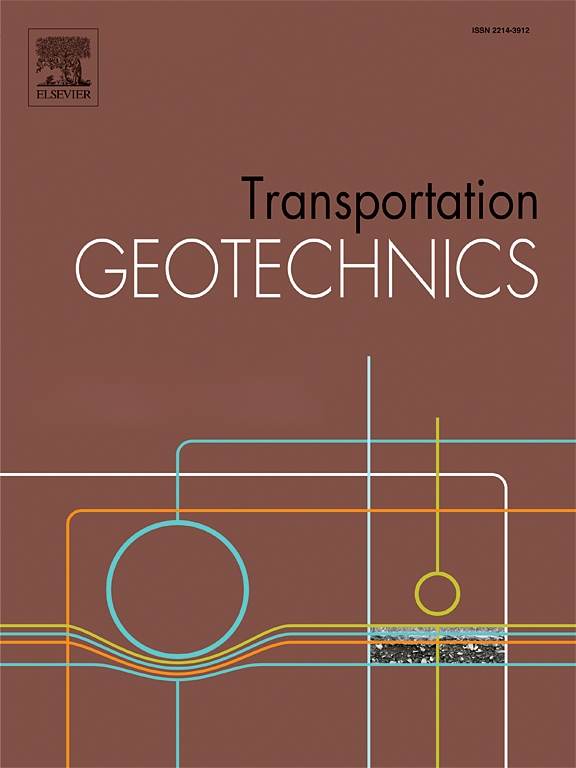Probabilistic insights into the drainage capacity of fouled railway ballast under intense rainfall
IF 5.5
2区 工程技术
Q1 ENGINEERING, CIVIL
引用次数: 0
Abstract
The current study implements reliability analysis to evaluate the drainage capacity of ballast layer of railway tracks regarding the heavy rainfall rates related to the climate change. The effects of different fouling materials (clay and sand) at diverse fouling ratios of 10 % to 60 % are examined, while also incorporating the uncertainty of rainfall intensity. In this context, the results from both the constant-head permeability test and the large-scale flume test are utilized to validate the Analytical-Numerical (A-N) models. Subsequently, Limit State Functions (LSFs) are defined based on the hydraulic conductivity and validated A-N models to capture probabilistic insights of the drainage of track superstructure via the Refined Directional Simulation (RDS). Based on the reliability index values acquired, uniform-intensity rainfall triggers lesser the failure probability of LSFs. Additionally, drainage length, hydraulic conductivity of granular material, and rainfall rates emerge as the most influential parameters affecting the drainage performance of the system. Overall, fouling ratios of 40 % and 20 %, respectively for sand-fouled and clay-fouled specimens, are characterized as critical conditions affecting the drainage potential of ballast layer, regarding the defined LSFs.
强降雨条件下受污染铁路道砟排水能力的概率分析
本研究采用可靠度分析方法,对与气候变化相关的强降雨率下铁路道砟层的排水能力进行评价。研究了不同污染材料(粘土和沙子)在不同污染比(10%至60%)下的影响,同时也考虑了降雨强度的不确定性。在此背景下,利用恒水头渗透性试验和大型水槽试验的结果来验证分析-数值(A-N)模型。随后,根据水力导率和经过验证的A-N模型定义极限状态函数(LSFs),通过精细化方向模拟(RDS)获取轨道上部结构排水的概率信息。根据得到的可靠性指标值,均强降雨对lsf的破坏概率影响较小。此外,排水长度、颗粒材料的水力导电性和降雨率是影响系统排水性能的最重要参数。总体而言,对于定义的lsf,砂土污染和粘土污染样品的污染率分别为40%和20%,这是影响压载层排水势的临界条件。
本文章由计算机程序翻译,如有差异,请以英文原文为准。
求助全文
约1分钟内获得全文
求助全文
来源期刊

Transportation Geotechnics
Social Sciences-Transportation
CiteScore
8.10
自引率
11.30%
发文量
194
审稿时长
51 days
期刊介绍:
Transportation Geotechnics is a journal dedicated to publishing high-quality, theoretical, and applied papers that cover all facets of geotechnics for transportation infrastructure such as roads, highways, railways, underground railways, airfields, and waterways. The journal places a special emphasis on case studies that present original work relevant to the sustainable construction of transportation infrastructure. The scope of topics it addresses includes the geotechnical properties of geomaterials for sustainable and rational design and construction, the behavior of compacted and stabilized geomaterials, the use of geosynthetics and reinforcement in constructed layers and interlayers, ground improvement and slope stability for transportation infrastructures, compaction technology and management, maintenance technology, the impact of climate, embankments for highways and high-speed trains, transition zones, dredging, underwater geotechnics for infrastructure purposes, and the modeling of multi-layered structures and supporting ground under dynamic and repeated loads.
 求助内容:
求助内容: 应助结果提醒方式:
应助结果提醒方式:


